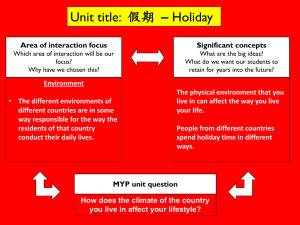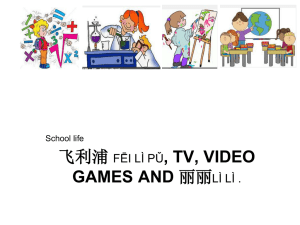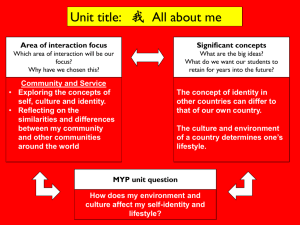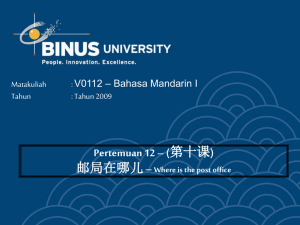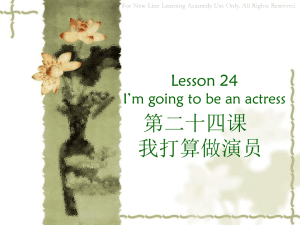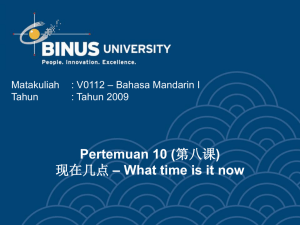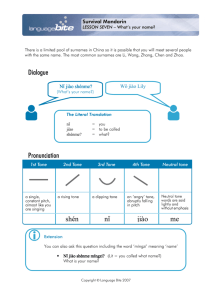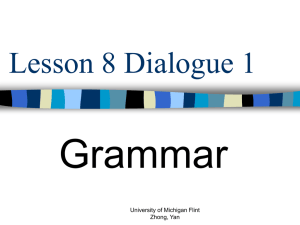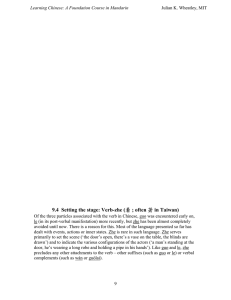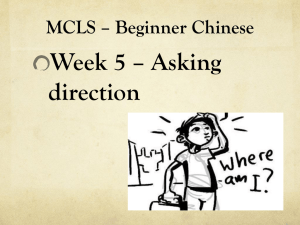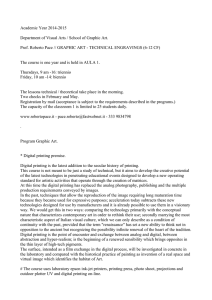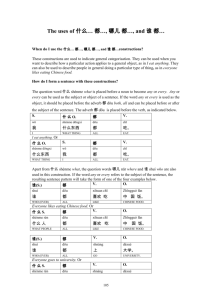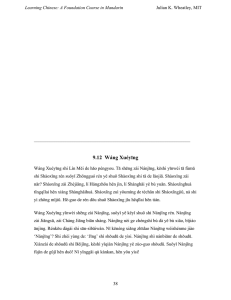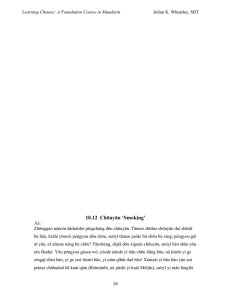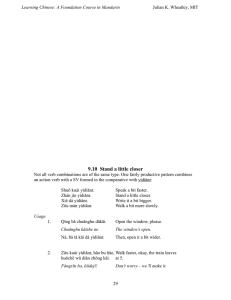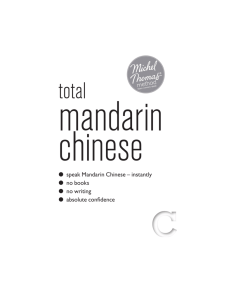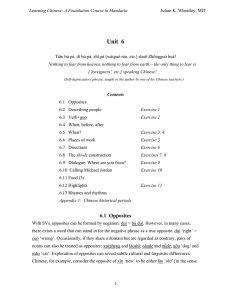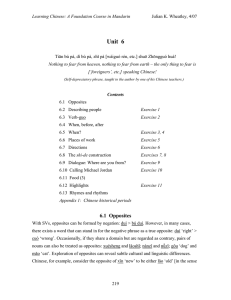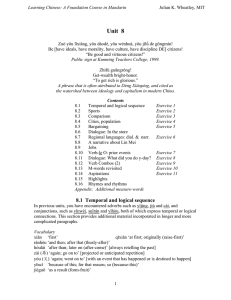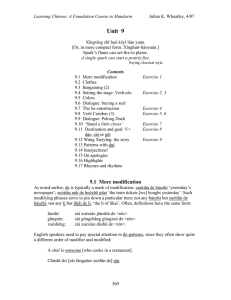Chapter 14 Dialogue 1
advertisement
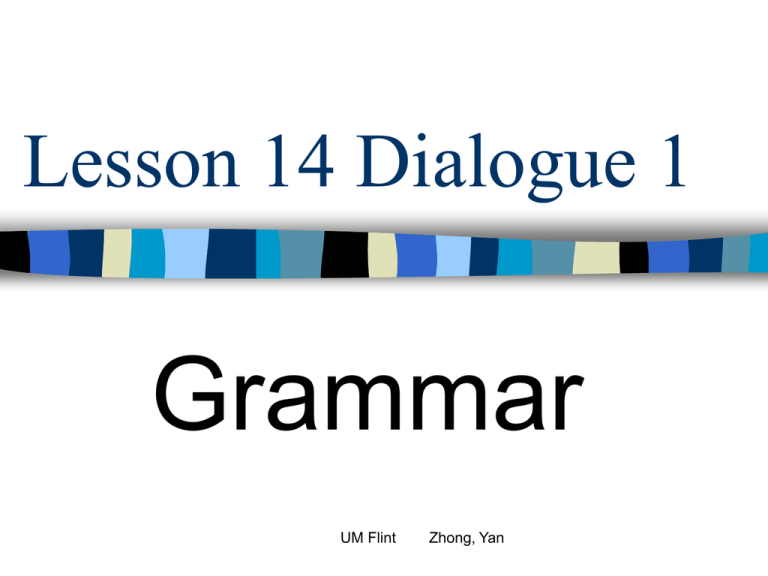
Lesson 14 Dialogue 1 Grammar UM Flint Zhong, Yan 呢 (ne) Indicating an Action in Progress 呢 (ne), at the end of a sentence, indicates that the action is in progress. It is like 在 (zài), which is never used at the end of a sentence, but rather before a verb. 你写什么呢? Nǐ xiě shénme ne? What are you writing? What are you looking for? 你找什么呢? Nǐ zhǎo shénme ne? 呢 (ne) can be used in conjunction with 在 (zài): 你在写什么呢? Nǐ zài xiě shénme ne? What are you writing? 你在找什么呢? Nǐ zài zhǎo shénme ne? What are you looking for? 在 (zài) can be preceded by 正 (zhèng). 我昨天给他打电话的时候,他正在做功 课呢。 Wǒ zuótiān gěi tā dǎ diànhuà de shíhou, tā zhèngzài zuò gōngkè ne. When I called him yesterday, he was right in the middle of doing his homework. The phrase 正在 (zhèngzài) places extra emphasis on the progressive nature of an action. Don’t go look for him. He is sleeping. 別去找他,他正在睡觉呢。 Bié qù zhǎo tā, tā zhèngzài shuì jiào ne. Verbal Phrases and Subject-Predicate Phrases Used as Attributives In Chinese, attributives, often followed by the particle 的 (de), always appear before the elements that they modify. Verbs, verbal phrases, and subjectobject phrases can all serve as attributives. 吃的东西 chī de dōngxi things to eat 穿的衣服 chuān de yīfu clothes to wear, or clothes being worn 新买的饭卡 xīn mǎi de fànkǎ newly-bought meal cards 昨天来的同学 zuótiān lái de tóngxué the classmate who cames yesterday 以前认识的朋友 yǐqián rènshi de péngyou the friend one got acquainted with in the past 我妈妈做的豆腐 wǒ māma zuò de dòufu the tofu dish that my mother makes/made 老师给我们的功课 lǎoshī gěi wǒmen de gōngkè the homework the teacher assigned us 朋友送的苹果 péngyou sòng de píngguǒ the apples given by a friend 请你跳舞的那个人 qǐng nǐ tiào wǔ de nà gè rén that person who asked you to dance 我妹妹爱的那个很帅 的男人 wǒ mèimei ài de nà ge hěn shuài de nánren that very handsome man that my sister loves 谢谢 再见 University of Michigan Flint 钟研
